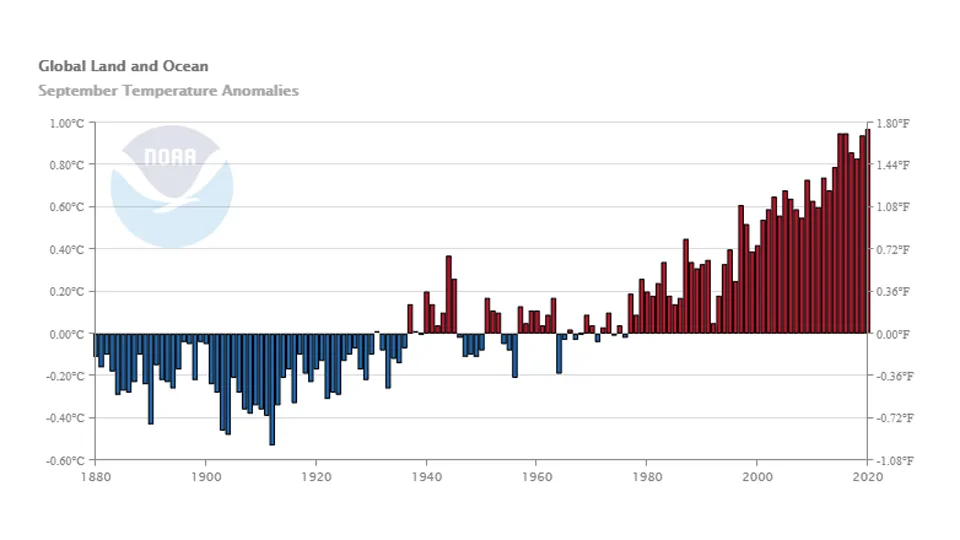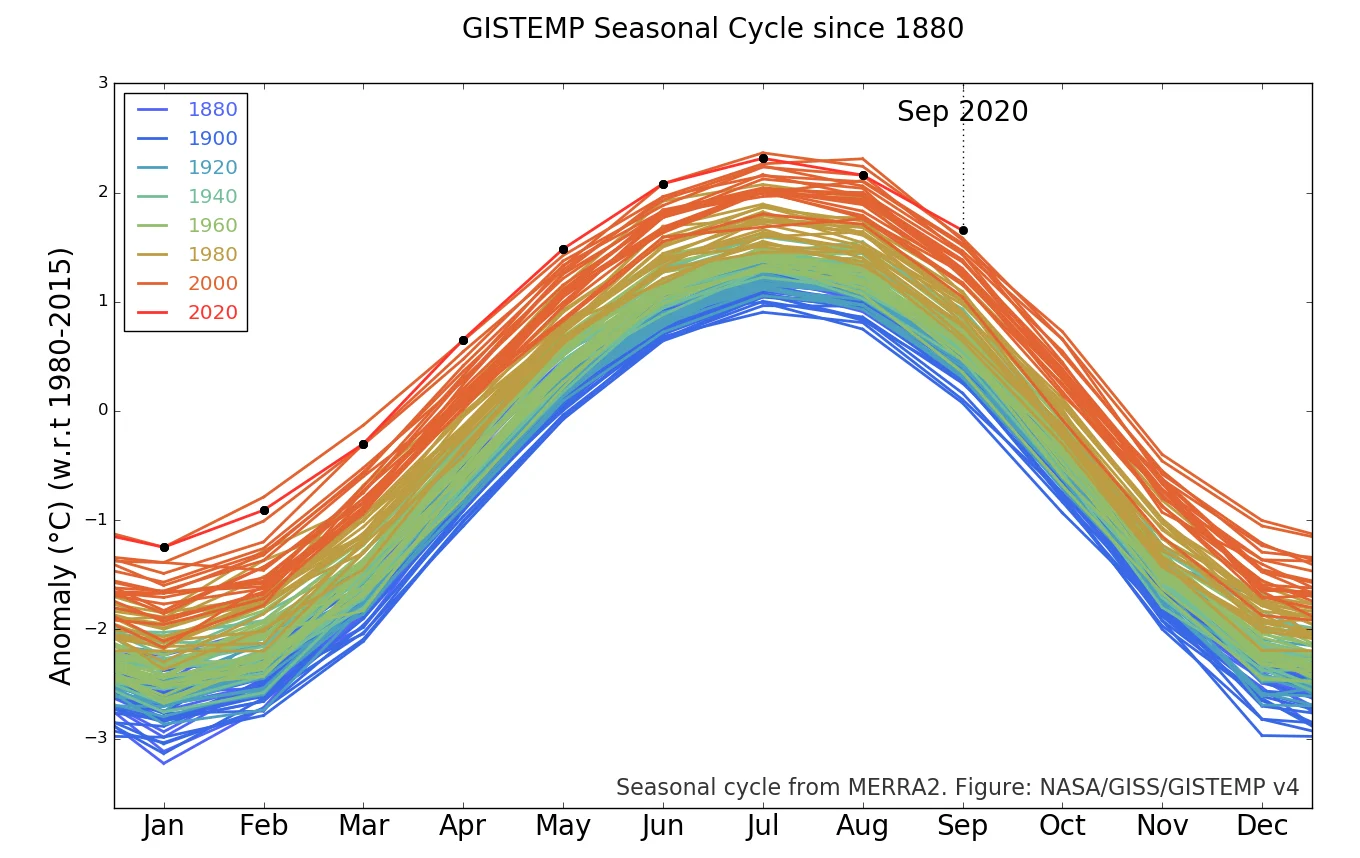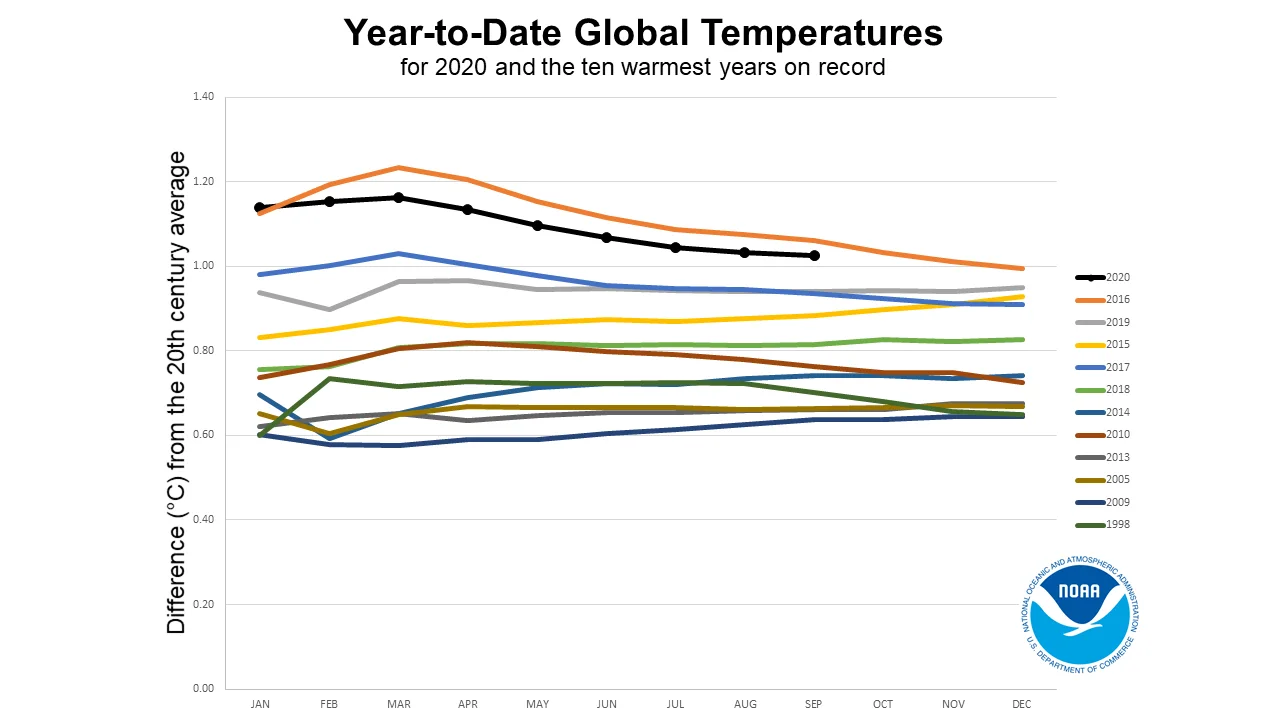
Record-hot September puts 2020 closer to becoming the new warmest year on record
Some of the coldest places on Earth suffered the worst heat last month
September just set a new record for heat across the globe, and with that, 2020 may be on the path to becoming the next hottest year on the books.
NASA and NOAA have tallied up global temperatures for September. Both agencies agree, last month was the hottest September we've seen in 141 years of record-keeping. Based on NOAA's records, the month was nearly 1°C warmer than the 20th century average for September. This beats out the previous record, which was set in both 2015 and 2016.

The months of September, from 1880 to 2020, with September 2020 ranking as the warmest. The 7 warmest Septembers in the records take place in the past 7 years. Credit: NOAA
Meanwhile, NASA's calculations put the month as just over 1°C warmer than the last century. While different calculation methods result in slightly different final values, the NOAA and NASA figures independently track the same trend. As we continue to burn fossil fuels, global temperatures continue to rise.

Rather than directly comparing month to month, this graph shows how much warmer each month is than the yearly global average temperatures from 1980-2015. This provides a convenient look at the rise in temperatures since 1880 while highlighting the seasonal cycle. Credit: NASA's Goddard Institute for Space Studies
According to NOAA, September 2020 marked the 44th consecutive September, and the 429th consecutive month, with temperatures above the 20th-century average.
Temperatures across large swaths of the globe were record-hot for the month. This includes some of the coldest places on the planet, such as Siberia and Antarctica. Other hot-spots seen were across much of Europe, Australia, the western United States, southern Brazil and Uruguay.

September 2020's temperature anomalies across the globe. Note the strong cooling off the west coast of South America, which indicates the La Niña pattern currently in place across the equatorial Pacific Ocean. Credit: NOAA/Climate.gov
RECORD HEAT FOR 2020?
Earlier this year, monthly temperatures were painting a very clear picture. Even though 2020 lacked the strong El Niño that was seen during 2015 and 2016, it would still be a strong contender to become the new hottest year on record.
Although the summer months reduced that chance somewhat, this seemed reasonable, given that it appeared as though a La Niña pattern was developing in the equatorial Pacific. The opposite of an El Niño, a La Niña tends to have a cooling influence on global temperatures.
As shown in the map of global temperature anomalies above, La Niña has undoubtedly arrived. Despite this, September's record-breaking heat has still put this year back in the running for warmest on record.

This 'horserace' graph of global temperatures tallies up the 'year to date' averages for each month. This gives a good look at the current trend and where the year may end up, compared to the 10+ hottest years on record so far. Credit: NOAA
Based on the above graph and NOAA's statistics, it's looking like 2020 is going to end up as, at least, the 2nd hottest year on record. The agency's scientists currently give the year a roughly 65 percent chance of beating 2016's record.
The key will probably be La Niña.
By the end of 2016, enough extreme temperatures had been logged from the dissipating record 2015-2016 El Niño to ensure the year would end up as the hottest on record. The weak La Niña that developed towards the end of the year simply reduced how much of a lead 2016 would have against all previous records.
With a new La Niña pattern now in place, it remains to be seen how strong this pattern becomes. If it exerts enough influence on global temperatures, 2016 may be able to hold on to its record for now.
Thumbnail Photo Credit: Adobe Stock







